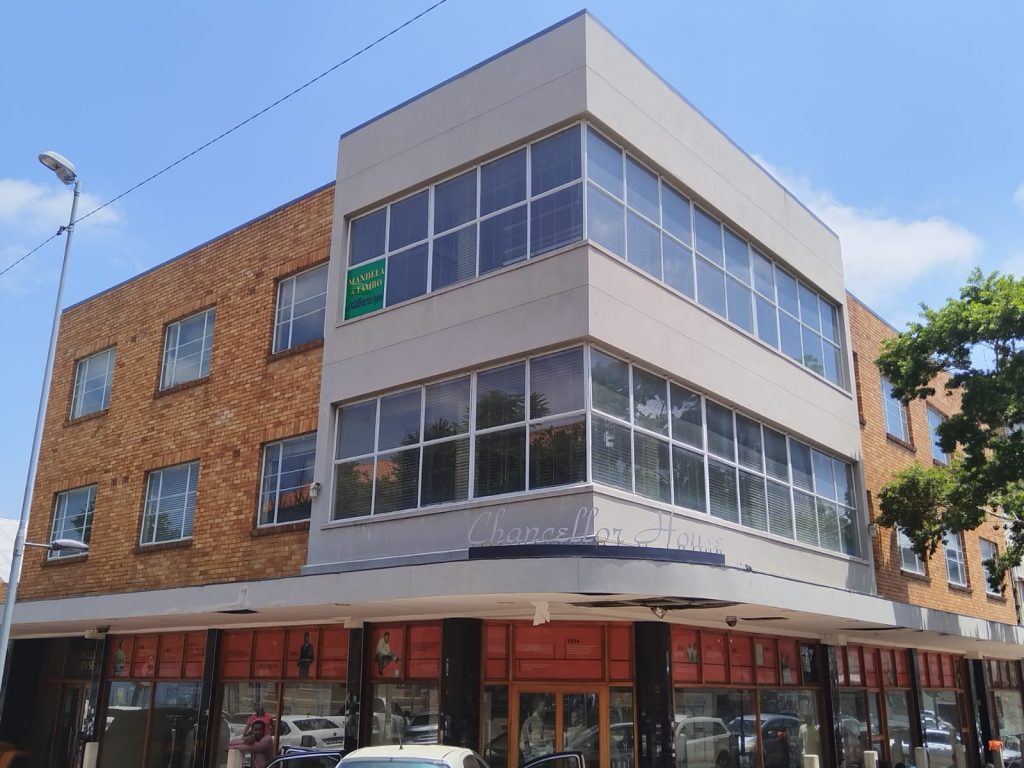When Johannesburg was proclaimed in 1886 on the triangular site Randjieslaagte, the area of the town was two and half square km. Randjieslaagte was a piece of ‘uitvalgrond’ – land leftover from the farms surveyed around it. This beacon marks the apex of the triangle with its base running along Commissioner Street, from End Street in the East to Diagonal Street in the West. These two and half square km remained the municipal area of Johannesburg until 1901. The original surveyor’s beacon was a white pole fixed in a cairn of rock. It was declared a National Monument in 1965 and the cairn smoothed with cement.
The development of the artwork was created as part of Wits Junction, a student residence intended to cater especially for postgraduate and mature students, created by Wits University in 2012. This student village was the largest construction project undertaken by Wits, which celebrated its Centenary in 2022.
Beacon Lane rides alongside the original Randjeslaagte Beacon, the City’s oldest monument, marking the birth of Johannesburg in 1886.
The Triangle Mosaic represents the shape and street names of the new mining town of Johannesburg in 1886.
A concrete plinth with mosaic artwork on the top half. The triangle mosaic represents the shape and street names of the new mining town of Johannesburg in 1886. The mosaiced pillar stands alongside the Randjeslaagte Beacon.
When Johannesburg was proclaimed in 1886 on the triangular site Randjieslaagte, the area of the town was two and half square km. Randjieslaagte was a piece of ‘uitvalgrond’ – land leftover from the farms surveyed around it. This beacon marks the apex of the triangle with its base running along Commissioner Street, from End Street in the East to Diagonal Street in the West. These two and half square km remained the municipal area of Johannesburg until 1901. The original surveyor’s beacon was a white pole fixed in a cairn of rock. It was declared a National Monument in 1965 and the cairn smoothed with cement.
The development of the artwork was created as part of Wits Junction, a student residence intended to cater especially for postgraduate and mature students, created by Wits University in 2012. This student village was the largest construction project undertaken by Wits, which celebrated its Centenary in 2022.
Beacon Lane rides alongside the original Randjeslaagte Beacon, the City’s oldest monument, marking the birth of Johannesburg in 1886.
The Triangle Mosaic represents the shape and street names of the new mining town of Johannesburg in 1886.

A culmination of research gathered over many years, the Online Johannesburg Heritage Register is being launched on Nelson Mandela Day 18 July 2025.
Among the many heritage sites featured is Chancellor House, the downtown offices of Mandela and Tambo Attorneys in the 1950s. After having been vacant and shuttered for more than a decade, this iconic building is being revived and brought to life once again as offices for the Community Development Department, which oversees the City’s Arts, Culture & Heritage Services.